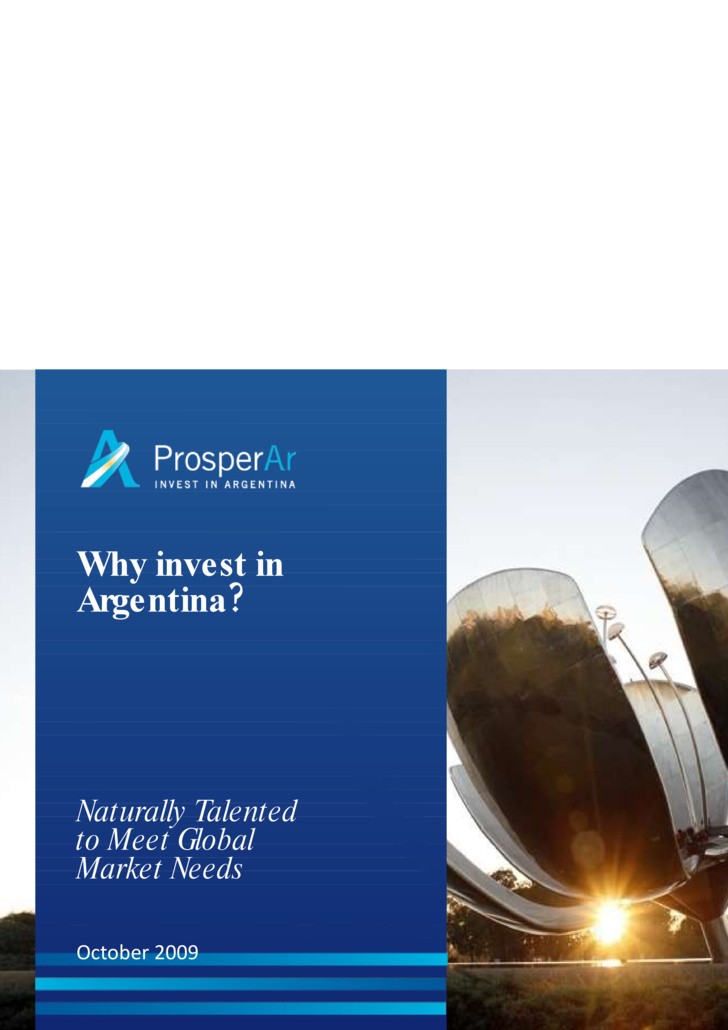A Guide to Investing in Argentina
Post on: 5 Апрель, 2015 No Comment

Investing in Latin America’s Third Largest Economy
You can opt-out at any time.
Argentina may not be the most popular Latin American destination for investors historically, but the upper middle class economy is the third largest in the region and its impressive growth rates between 2003 and 2011 have made it increasingly important in recent years. This article will take a look at the country’s economy, easy ways to invest, and other important considerations.
Difficult History with Investors
Prior to 1983, Argentina was led by a military dictatorship that caused significant economic problems in the form of sovereign debt. While the subsequent democratic government did its best to stabilize the economy, the debt proved difficult to service and inflation began to spiral out of control towards the end of the decade, peaking at 5,000% in 1989.
Throughout the 1990s, the government relied on aid from the International Monetary Fund (IMF) to provide it with reliable access to credit and guide its economic reforms. Government spending and corruption remains high, however, and the country eventually defaulted on $132 billion in public debt in 2001, causing turmoil for citizens and massive losses for investors.
Argentina’s Post-2001 Recovery
Argentina’s economy gradually improved after the crisis in December of 2001, growing at 7% to 9% per year between 2003 and 2011, with the exception of 2009. While the country restructured some $100 billion in bonds from 2001, investors have profited in recent years given that the newly issued bonds are linked to the country’s gross domestic product (GDP).
However, many problems still remain for investors in Argentina. Creditors that refused to accept the debt swap in 2005 remain in constant battle to reclaim assets, while official consumer price index (CPI) estimates have been controversial since 2007. And, high inflation has been a persistent problem for the country that still spends a lot on public services and infrastructure.
Invest in Argentina with ETFs & ADRs
The easiest way to invest in Argentina is using exchange-traded funds (ETFs), which offer diversified exposure in a single U.S.-traded security. Those looking for more specific investments can also purchase American Depository Receipts (ADRs), which are U.S.-traded securities that represent foreign stocks traded on Argentina’s stock exchange.
The most popular Argentine ETF is the Global X FTSE Argentina 20 ETF (NYSE: ARGT), which holds the twenty largest and most liquid companies participating in the country’s economy. As of September 2012, approximately 36% of these companies were consumer staples and 33% were materials, while the top three accounted for more than 10% of the portfolio.
Other ETFs with exposure to Argentina include:

- Claymore/BNY Mellon Frontier Markets ETF (NYSE: FRN) — 6.8%
- WCM/BNY Mellon Focused Growth ADR ETF (NYSE: AADR) — 5.5%
- Market Vectors Steel ETF (NYSE: SLX) — 4.5%
Some popular Argentine ADRs include:
- MercadoLibre Inc. (NASDAQ: MELI)
- Arcos Dorados Holding Inc. (NYSE: ARCO)
- YPF SA (NYSE: YPF)
Important Investment Considerations
Argentina represents a large and growing market in Latin America, with a robust economy that has rebounded well from a crisis in 2001. But, there are still many aspects of the economy that investors are not fully comfortable with, including the apparent lack of reliable inflation data. As a result, investors should be careful when allocating money into these investments.
Investors looking into the Global X FTSE Argentina 20 ETF (NYSE: ARGT) should also be aware that the fund’s top holding (Tenaris SA) represents 18.7% of its portfolio. Notably, this company is involved in the steel industry, which means that the ETF could have significant exposure to this industry, which may not correlate fully with the Argentine economy.
In the end, investors should carefully build Argentine exposure into a diversified stock portfolio, with the safest bet being the diversified ETF.














